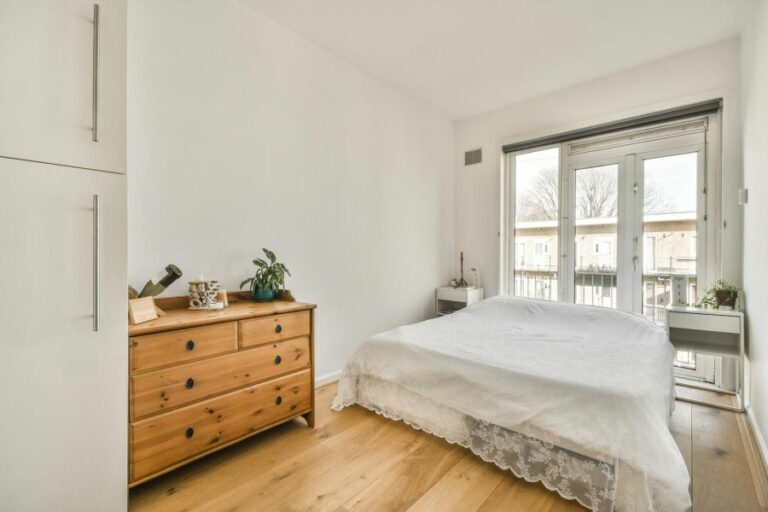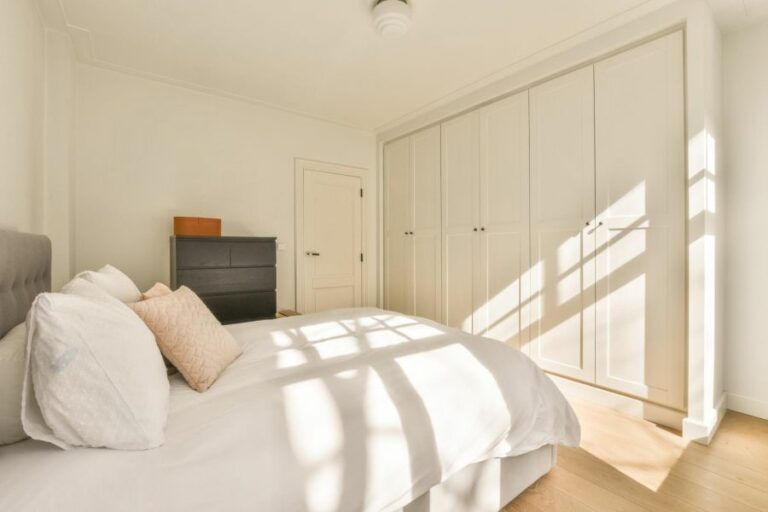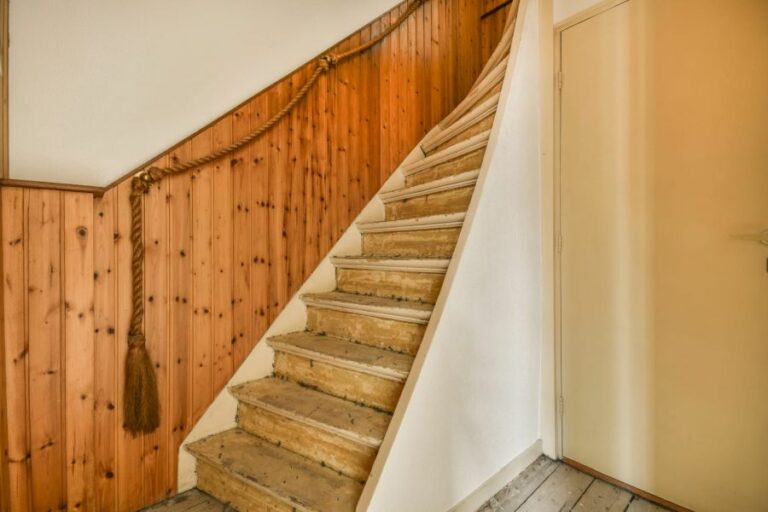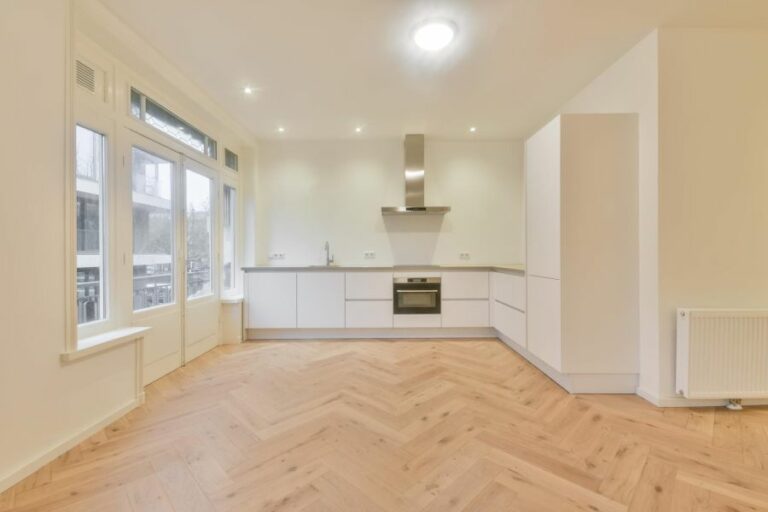Waterproof Indoor Paint Choices, 25 Things You Should Know
Tired of water damage, mold, or mildew threatening your walls? Look no further! This expert guide on waterproof indoor paint choices has got you covered. I’ll help you make a well-informed decision for a long-lasting and damage-free interior, boosting your walls’ longevity and satisfaction.
Waterproof indoor paint choices:>
Waterproof indoor paint options include mildew-resistant paints like Zinsser Perma-White Mold & Mildew-Proof Interior Paint and Sherwin-Williams’ Duration Home Interior, epoxy paints such as Rust-Oleum’s Epoxy Shield Water-Based Interior Paint and BEHR Premium 1-Part Epoxy Concrete and Garage Floor Paint, and waterproofing coatings like Drylok’s Waterproof Masonry Paint and Benjamin Moore Ultra Spec Masonry Elastomeric Waterproof Coating. Proper surface preparation, following manufacturer instructions, considering room humidity, and applying multiple coats are essential for successful paint application.

Looking for the perfect waterproof paint for your indoor spaces? Read on as we unravel a fantastic selection, discuss their key features, and guide you in making an informed choice to protect your walls. Don’t miss out on our top recommendations!
Contents
- 1 Top-Notch Waterproof Paint Options for Indoors
- 2 Ultimate Waterproof Indoor Paint Selection
- 3 Selecting the Ideal Waterproof Wall Paint
- 4 Using Waterproof Paint in Interior Spaces
- 5 Premium Waterproof Coating: Finding the Best
Top-Notch Waterproof Paint Options for Indoors
Waterproofing is a key consideration for homeowners looking to protect their homes from leaks, moisture, and dampness. One of the best ways to achieve this is by opting for waterproof indoor paint choices.
• Mildew Resistant Paints: Preventing Mold Growth
Mildew-resistant paints are formulated with fungicides that resist the growth of mold, making them ideal for damp and humid rooms like bathrooms and basements.
One popular option is the Zinsser Perma-White Mold & Mildew-Proof Interior Paint that guarantees the paint surface will remain free of mold and mildew for a minimum of 5 years.
Another recommendation is Sherwin-Williams’ Duration Home Interior, which offers a variety of finishes such as matte, satin, and semi-gloss.
These waterborne acrylic paint options provide superior mold and mildew resistance. For more information on mold-resistant paints, check this resource from Cornell University.
• Epoxy Paints: Heavy Duty Protection for Concrete Surfaces
Epoxy paint is a durable, waterproof, and chemical-resistant paint option that is perfect for coating concrete walls and floors. Epoxies consist of a resin and a hardener that, when mixed together, form a tough, water-resistant coating.
Rust-Oleum has a line of epoxy paints, including the Epoxy Shield Water-Based Interior Paint. It is a user-friendly, water-based formula that provides excellent adhesion, durability, and protection against water seepage in basements, garages, or other concrete surfaces.
I recommend the BEHR Premium 1-Part Epoxy Interior/Exterior Concrete and Garage Floor Paint for those looking for an industrial-grade solution. This paint offers excellent hiding properties and a high-gloss, easy-to-clean finish that resists scuffing, fading, cracking, peeling, and blistering.
• Waterproofing Coatings: Additional Protection for Your Walls
Homeowners can apply waterproof coatings on top of their existing paint to protect against water and dampness.
Products like Drylok’s Waterproof Masonry Paint create a watertight barrier on interior or exterior walls, protecting against hydrostatic pressure and moisture penetration.
For those experiencing water seepage or existing dampness issues in their homes, I recommend using a moisture-tolerant waterproofing paint like the Benjamin Moore Ultra Spec Masonry Elastomeric Waterproof Coating.
This product can be applied directly to damp surfaces, providing a seamless waterproof barrier and bridging hairline cracks.
• Tips for Waterproof Paint Application
- Proper Surface Preparation: For successful adhesion of waterproof paint, the surface must be clean, dry, and free of any loose paint, dirt, or debris. In some cases, using a primer may help improve adhesion and ensure a longer-lasting, waterproof finish.
- Follow Manufacturer Instructions: Each paint has unique properties and application methods. Always consult the manufacturer’s instructions for optimal results.
- Consider the Room’s Humidity: High humidity can slow the drying process of some paints, so ensure proper ventilation during application and drying.
- Apply Multiple Coats: To achieve a durable, waterproof finish, apply at least two coats of paint, allowing the recommended drying time between them.
In conclusion, adopting waterproof indoor paint choices is essential for protecting your home from water damage, mold, and dampness. By selecting the appropriate paint type and following proper application techniques, homeowners can ensure a long-lasting, waterproof finish for their interior walls and surfaces.
Ultimate Waterproof Indoor Paint Selection
• Understanding Waterproof Paints
Waterproof paints are essential for protecting surfaces and structures from water damage. These coatings form an impermeable barrier that prevents water infiltration, preventing mold growth, and structural damage.
For this reason, waterproof paints are widely used in damp, humid environments such as basements, bathrooms, laundry rooms, and kitchens. When selecting the best waterproof paint for indoor use, it is essential to consider factors such as surface type, durability, ease of application, and desired finish.
• Epoxy-Based Waterproof Paints
Epoxy paints are a popular choice for waterproofing indoor surfaces due to their durability, chemical resistance, and versatility. They create a robust, flexible, and waterproof surface that can be applied to concrete, plaster, brick, and other materials.
One highly recommended epoxy paint is Rust-Oleum’s EpoxyShield Water-based Basement Floor Coating. It is specifically designed for basements but can be used on any interior concrete floor. It is easy to apply, odor-free and provides a durable, waterproof finish that resists peeling, cracking, and fading.
• Acrylic-Based Waterproof Paints
Acrylic-based waterproof paints are water-soluble and provide a slightly flexible waterproof layer on various surfaces. They are ideal for walls, ceilings, and other areas with less direct water exposure.
Acrylic-based waterproof paints also offer excellent adhesion properties, making them suitable for application on tiles, shower cabins, and other moist environments.
A popular option is Zinsser’s Perma-White Mold & Mildew-Proof Interior Paint, which is specifically formulated to resist mold and mildew growth.
With its self-priming and easy-to-apply formula, it guarantees long-lasting protection and a beautiful finish for bathrooms, kitchens, and other moisture-prone areas.
• Elastomeric Waterproof Paints
Elastomeric waterproof paints are highly-flexible, rubber-like coatings that are excellent for sealing and protecting surfaces from water damage. Their high elongation properties enable them to move with the substrate, thereby preventing cracking and ensuring long-lasting waterproofing protection.
Henry’s ElastoSeal Waterproofing Elastomeric Sealer is a popular choice for indoor waterproofing applications. It can be applied to various surfaces, including concrete, masonry, and wood. Its seamless, monolithic waterproof membrane helps maintain the integrity of the structure and prevents water infiltration.
• Urethane-Based Waterproof Paints
Urethane-based paints provide excellent durability, abrasion resistance, and long-lasting protection from water and chemicals. They are ideal for high-traffic areas and surfaces that require high levels of waterproofing protection.
One such product is UGL’s DRYLOK Clear Masonry Waterproofer, a urethane-based waterproof paint that creates a clear, high-gloss finish. It is designed for use on horizontal surfaces, such as floors and countertops, and works effectively in preventing water penetration.
• Tips for Applying Waterproof Paint
- Before applying any waterproof paint, clean the surface thoroughly, removing any dust, debris, or grease.
- Repair any cracks or damage to the surface to ensure optimal adhesion of the waterproof coating.
- Test a small, inconspicuous area before covering the entire surface to confirm compatibility with the substrate and the desired finish.
- Follow the manufacturer’s instructions regarding mixing, application, and drying times for best results.
• Conclusion
Selecting the best waterproof paint for indoor use depends on various factors, including the type of surface, the desired finish, and the level of protection required.
Epoxy-based, acrylic-based, elastomeric, and urethane-based waterproof paints offer different advantages and characteristics, ensuring that there is an appropriate solution for every indoor waterproofing application.
By understanding the unique features of each type of waterproof paint and choosing the right product, you can effectively protect your indoor surfaces from water damage and ensure long-lasting results.
Paint Brand | Paint Name | Application Areas | Key Features |
|---|---|---|---|
BEHR | BEHR Premium Basement & Masonry Waterproofer | Basements and other indoor masonry surfaces | Waterproof, mildew-resistant, alkali-resistant |
Drylok | DRYLOK Original Masonry Waterproofer | Interior and exterior masonry walls | Waterproof, mildew-resistant, low odor |
Perma-White | Perma-White Mold and Mildew-Proof Interior Paint | Indoor walls and ceilings | Mold and mildew-proof, waterproof, self-priming |
KILZ | KILZ Interior/Exterior Basement and Masonry Waterproofing Paint | Basements and other indoor masonry surfaces | Waterproof, alkali-resistant, easy application |
Rust-Oleum | Rust-Oleum Zinsser Perma-White Interior Paint | Indoor walls and ceilings | Mold and mildew-proof, waterproof, self-priming, low odor |
Selecting the Ideal Waterproof Wall Paint
When it comes to painting the walls of your home, selecting the right paint can make a world of difference. One of the most important features to consider is whether the paint is waterproof.
• Types of Waterproof Paints
There are several types of waterproof paints available on the market. Each type has its unique characteristics and works best for specific applications.
1. Acrylic Paint
Acrylic paint is a versatile and popular choice for waterproofing walls. Made from acrylic resin, this type of paint creates a strong and durable waterproof barrier when it dries. It is suitable for both interior and exterior walls, and it’s available in a wide range of colors and finishes.
Recommended Acrylic Paint: Behr Premium Plus Ultra
2. Elastomeric Paint
Elastomeric paint is a specially formulated waterproof paint designed for exterior walls. As the name suggests, it has elastic properties that allow it to expand and contract with temperature fluctuations, making it resistant to cracking and chipping.
Elastomeric paint also has excellent adhesion, making it a suitable choice for surfaces with minor cracks or imperfections.
Recommended Elastomeric Paint: Sherwin-Williams ConFlex XL
3. Cementitious Paint
Cementitious paint is a durable waterproofing solution that consists of cement, sand, and polymers. It forms a hard and sturdy barrier that effectively resists moisture penetration. This type of paint is suitable for surfaces like concrete and masonry, making it an excellent choice for basements and exterior walls.
Recommended Cementitious Paint: Dr. Fixit DampGuard
4. Silicone-based Paint
Silicone-based paint is another excellent waterproofing solution for walls. It forms a protective layer that repels water effectively. It’s suitable for both interior and exterior walls, as well as various surfaces, such as masonry, stucco, and brick.
Recommended Silicone-based Paint: KEIM Soldalit
• Benefits of Waterproof Paint
Waterproof paints offer several key benefits:
1. Protection from Moisture Damage
The primary advantage of waterproof paint is its ability to prevent moisture from penetrating walls. Over time, water infiltration can cause severe damage to building materials, leading to mold growth, rot, and structural instability.
2. Improved Aesthetic Appeal
Waterproof paints are available in various colors, textures, and finishes, allowing homeowners to create a visually appealing look for their interiors and exteriors.
3. Enhanced Durability
By providing added protection against moisture, waterproof paints extend the lifespan of your walls and help reduce maintenance costs in the long run.
4. Healthier Living Environment
Preventing moisture buildup helps to eliminate the growth of mold and mildew, contributing to a healthier living environment for you and your family.
• Choosing the Right Waterproof Paint
With the numerous options available, selecting the best waterproof paint for your walls can be an overwhelming task. Consider the following factors when making your decision:
1. Surface Material
Consider the material of the wall you are painting. For instance, cementitious paint works best on concrete and masonry, while elastomeric paint is more suitable for exterior walls exposed to significant temperature fluctuations.
2. Location
Evaluate whether the wall is situated indoors or outdoors, as well as the general climate of your area. This information will help you determine which waterproof paint would be more appropriate for your needs.
3. Budget
Waterproof paint can vary in cost based on the product and brand. Determine your budget beforehand and select a product that fits within that range.
4. Personal Preference
Ultimately, the decision comes down to personal preference. Test a small sample of the paint on your wall to ensure the color and finish match your desired aesthetic.
• Tips for Applying Waterproof Paint
When it comes to applying waterproof paint, follow these best practices for optimal results:
- Prepare the surface by cleaning it properly, removing dirt, grease, and loose paint.
- Repair any visible cracks or holes in the wall.
- Apply a high-quality primer to promote better adhesion between the wall and the waterproof paint.
- Follow the manufacturer’s instructions for the recommended number of coats and drying times.
- Allow the paint to cure completely before exposing it to water or moisture.
In conclusion, waterproof paint is an excellent investment to protect the walls of your home from moisture damage, enhance their appearance, and prolong their lifespan.
By understanding the different types of waterproof paints, their benefits, and how to choose the right one for your needs, you can make an informed decision and create a more durable and appealing living space.
For more information on waterproof paints, visit the Paint Quality Institute – a valuable resource for homeowners and painting professionals alike.
Using Waterproof Paint in Interior Spaces
Waterproof paint is designed specifically to protect surfaces from water damage, moisture, and humidity. It is a popular choice for outdoor applications, such as on exterior walls, foundations, and decks.
But can you use waterproof paint indoors? The answer is yes. In fact, it can be beneficial in certain areas of your home that are susceptible to water and humidity.
• Applications of Waterproof Paint Indoors
– Bathrooms
Bathrooms are one of the most common places where waterproof paint can be used indoors. Due to the constant exposure to moisture from showers, bathtubs, and sinks, bathroom walls and ceilings can quickly harbor mold and mildew.
Waterproof paint helps prevent this by creating a barrier that repels water and moisture.
– Basements
Basements are another area where waterproof paint can be beneficial indoors. Being underground, basements are prone to dampness and moisture, leading to potential mold and mildew issues.
Applying waterproof paint to basement walls can help create a barrier to prevent water from seeping in and causing damage.
– Kitchens
Kitchens are also susceptible to moisture due to cooking, dishwashing, and cleaning. To help protect the walls and surfaces near sinks and appliances, applying waterproof paint can provide an additional layer of protection.
– Laundry Rooms
Laundry rooms, where washers and dryers are in use, can produce a significant amount of moisture and humidity. Waterproof paint can help protect the walls and surfaces from potential water damage in this area of your home.
• Benefits of Using Waterproof Paint Indoors
– Mold and Mildew Resistance
One of the main benefits of using waterproof paint indoors is the added resistance to mold and mildew growth. The water-repellent properties of the paint prevent moisture from seeping through the surfaces, thus reducing the chance of mold and mildew growth.
– Durability
Waterproof paint is specifically designed to withstand harsh weather and water exposure, making it more durable than regular interior paint. This means that it will maintain its appearance and functionality for longer periods of time, even in high-humidity areas.
– Easy Cleaning
The water-resistant properties of waterproof paint make it easier to clean. Walls painted with waterproof paint can be wiped down quickly and easily with a damp cloth, making it more convenient for cleaning in rooms where spills and splashes are common.
– Improved Indoor Air Quality
By reducing the possibility of mold and mildew growth inside your home, waterproof paint can contribute to improved indoor air quality. Mold and mildew can cause respiratory issues, allergies, and other health problems, so ensuring a clean and healthy indoor environment is essential.
• Tips for Successfully Applying Waterproof Paint Indoors
- Surface Preparation: To get the best results from your waterproof paint application, make sure the surface is clean, dry, and free from any loose paint or debris. This will ensure proper adhesion of the paint.
- Use a Primer: Applying a primer can help you achieve a smoother finish and better adhesion of the waterproof paint. Choose a primer that is compatible with the waterproof paint you have selected.
- Choose the Right Tools: Using appropriate brushes, rollers, and other application tools can make the process of applying waterproof paint indoors much easier and result in a better finish.
- Apply Multiple Coats: For maximum waterproofing protection, it is advisable to apply at least two coats of paint. Be sure to follow the manufacturer’s instructions on drying times between coats.
- Ventilation: While applying waterproof paint indoors, ensure that the area is well-ventilated to prevent inhaling any harmful fumes.
• Conclusion
In conclusion, using waterproof paint indoors can be a practical and effective solution for protecting certain areas of your home from water damage, moisture, and humidity.
By choosing the right product, properly preparing your surfaces, and following proper application techniques, you can enjoy the benefits of waterproof paint in your bathroom, basement, kitchen, or laundry room.
To learn more about waterproof paint and its applications, visit the Environmental Protection Agency’s website for helpful tips and information.
Question | Answer |
|---|---|
Can you use waterproof paint indoors? | Yes, it can be used indoors on surfaces like bathrooms and basements where moisture may be an issue. |
Premium Waterproof Coating: Finding the Best
Waterproof coatings are essential for protecting various surfaces from water damage, corrosion, and other potential issues. As there are several types of waterproof coatings available, it is crucial to choose the best one for your specific needs.
• Different Types of Waterproof Coatings
– Acrylic Coatings
Acrylic coatings are one of the most widely used waterproofing materials, applicable to a variety of surfaces such as roofs, walls, and even floors. Acrylic coatings are durable and easy to apply, making them an excellent choice for many applications.
Pros:
- Environmentally friendly
- Easy application
- UV resistant
Cons:
- Not suitable for heavy foot traffic
- May require frequent maintenance
– Polyurethane Coatings
Polyurethane coatings are another popular option, known for their excellent resistance to water intrusion, chemicals, and abrasion. These coatings are suitable for various applications, including concrete, metal, and wood, and provide excellent adhesion, flexibility, and durability.
Pros:
- Highly durable
- Excellent water resistance
- Suitable for multiple surfaces
Cons:
- Potentially harmful VOCs (Volatile Organic Compounds)
- Professional application may be required
– Bituminous Coatings
Bituminous coatings, or asphalt coatings, are made from asphalt or coal tar and are commonly applied to mineral-based materials such as concrete or metal. They form a thick, black waterproof barrier that is highly resistant to moisture and corrosion.
Pros:
- Long-lasting protection
- Resistant to corrosion
- Suitable for below-grade applications
Cons:
- Limited color options
- Aesthetically unappealing
– Cementitious Coatings
Cementitious coatings are a popular choice for waterproofing concrete surfaces, as they form a strong bond with the substrate. These coatings consist of a blend of cement, sand, and other additives and are often used for below-grade applications such as basements, tunnels, and water tanks.
Pros:
- Strong bond with concrete
- Low shrinkage
- Easy application
Cons:
- Limited flexibility
- May require a protective topcoat
– Silicone Coatings
Silicone coatings are widely recognized for their excellent waterproofing properties and UV resistance. They are commonly applied to various surfaces, including roofs, walls, and floors. These coatings offer superior moisture resistance and weatherability, making them a top choice for outdoor applications.
Pros:
- Excellent UV resistance
- Superior moisture resistance
- Highly flexible
Cons:
- Higher cost compared to other coatings
- May require professional application
• Factors to Consider When Choosing a Waterproof Coating
– Surface Material
Different waterproof coatings adhere well to different surfaces, so it is essential to choose a material that works best with your specific substrate. For example, cementitious coatings are best for concrete surfaces, while polyurethane coatings work well on various materials.
– Application Area
The area where the waterproof coating will be applied plays a significant role in determining the best type of material.
For instance, coatings with excellent UV resistance, such as silicone coatings, are more suitable for outdoor applications, while coatings with strong below-grade capabilities, such as bituminous coatings, are ideal for basements and underground structures.
– Durability and Maintenance
How often you want to maintain the coating and the desired longevity are essential factors in choosing the best waterproof coating.
Some materials, like acrylic coatings, may require more frequent maintenance but are nonetheless durable, while others, like polyurethane and bituminous coatings, offer long-lasting protection and require less frequent maintenance.
– Environmental Factors
Considering the impact of the waterproof coating on the environment is crucial when selecting the best option. Some coatings, such as acrylic products, are environmentally friendly and produce fewer harmful VOCs. In contrast, others, like polyurethane, may release potentially harmful VOCs during application.
– Budget
Lastly, consider your budget when choosing a waterproof coating. While some options, like silicone coatings, might have superior properties, they also tend to be more expensive than other alternatives. Weigh the benefits and drawbacks to find the best waterproof coating within your budget.
• Expert Recommendations
Based on the above factors, expert recommendations point to silicone coatings for outdoor applications due to their superior UV resistance and moisture resistance.
For concrete surfaces, cementitious coatings are highly recommended as they form a strong bond with the substrate. For areas exposed to heavy foot traffic, polyurethane coatings are a suitable choice due to their durability and resistance to abrasion.
For more in-depth information on waterproof coatings, visit the U.S. Department of Energys guide on waterproofing materials and techniques.
• Conclusion
In conclusion, selecting the best waterproof coating depends on various factors, such as surface material, application area, durability, environmental impact, and budget.
By considering these aspects and following expert recommendations, you can choose the most suitable waterproof coating for your specific needs, ensuring long-lasting protection for your surfaces.
Coating Type | Description | Uses |
|---|---|---|
Acrylic | Water-based and durable, with excellent adhesion and UV resistance. | Roofs, walls, and masonry surfaces. |
Polyurethane | Flexible, abrasion-resistant, and able to withstand foot traffic. | Roofs, decks, and waterproofing basements. |
Silicone | Highly resistant to weather, UV rays, and ponding water. | Roofs, especially flat roofs with ponding water issues. |
Elastomeric | Flexible, able to expand and contract with building movement. | Roofs, walls, and masonry surfaces. |
Bituminous | Asphalt-based, providing a highly durable and waterproof barrier. | Roofs, basements, and underground structures. |
Cementitious | Easy to apply, breathable, and highly resistant to water penetration. | Basements, foundations, and concrete surfaces. |







